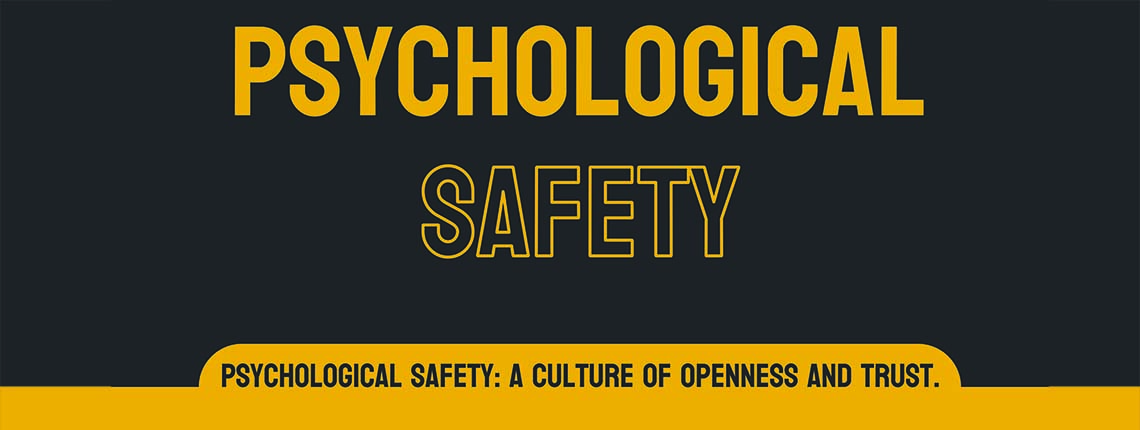Psychological Safety

Psychological Safety in the Workplace
Employer resource
This piece is focused on the need for psychologically safe workspaces and the issues workplaces face without a psychological safe environment.
Why are you missing out from hearing your employees’ great ideas?
Are you not hearing from certain people in meetings?
Do you notice that only certain voices dominate your workspace?
And people leave the company with no real sign or word they had issues within the company?
It could be because you don’t have a psychologically safe workspace.
What is “Psychological safe”
It is when a person feels safe to speak out without threat of punishment, being able to admit mistakes without fear of job threat, it is a space where people can ask questions without judgement and also a place a person can be vulnerable without fear of negative consequences.
It a workplace that makes someone feel safe, that they are respected and trusted and that that person respects and trust leadership in return.
Not having a Psychological safe workplace, is possibly what is increasing the turnover lack of innovation and engagement in your workplace.
- More than 8 in 10 employees in psychologically safe organisations want to stay long-term.
- Only 50% of workers say their managers create psychological safety on their teams.
- Just 25% of employees with mental health challenges feel they can bring their whole selves to work.
- Organisations with high psychological safety outperform their peers by 20 percentage points or more in employee satisfaction.
- Building psychological safety is now a top workplace wellbeing trend for 2025.
- 63% of workers don’t feel safe sharing their opinions at work.
- 40% of Leaders said if they made a mistake, it would be held against them. (This is mid management)
You can see from these statistic’s that that it is very important to have a psychologically safe space, for your employee’s mental wellbeing but also to reduce turn over and increase the engagement and innovation.
So here are our top tips improve psychological safety in your workplace.
- Use Mistakes as Opportunities for Reflection, Not Punishment
- Treat mistakes as learning opportunities rather than reasons for discipline.
- Once an issue is addressed and resolved, move forward without holding it against anyone.
- Communicate this clearly so employees understand that past mistakes won’t define them. - Communicate Changes and Plans Transparently
- Lack of clarity about company direction and roles can create anxiety and insecurity.
- Keep staff informed about changes to reduce uncertainty and help them stay focused on their work.
- Transparency builds trust and helps employees feel secure in their roles. - Lead by Example
- Demonstrate accountability by acknowledging your own mistakes.
- Show openness to feedback and a willingness to improve.
- Respect the perspectives, feelings, and experiences of your employees. - Encourage Regular, Open Conversations
- Adopt a culture of open dialogue where team members feel safe to share and challenge ideas.
- Accept challenges without defensiveness - this builds mutual respect and stronger solutions. - Learn and Adapt to Individual Communication Styles
- Take time to understand how each employee communicates and expresses themselves.
- Tailor your communication approach to better receive and respond to their input.
- This strengthens relationships and ensures a more inclusive and effective workplace. - Keep to Your Changes and Follow Up
- When changes are made - whether to policies, communication methods, or leadership behaviour - stick to them consistently.
- Follow-up shows that commitments are taken seriously, building credibility and trust.
- Inconsistency can create confusion and reduce morale, while reliable follow-through reassures staff and reinforces a stable, supportive environment.
We hope this resource has provided valuable insights to help you adopt a greater psychological safety in your workplace. By promoting open communication, leading with empathy, and building trust through consistency and reflection, you can create a supportive and productive environment for you and your employees.



